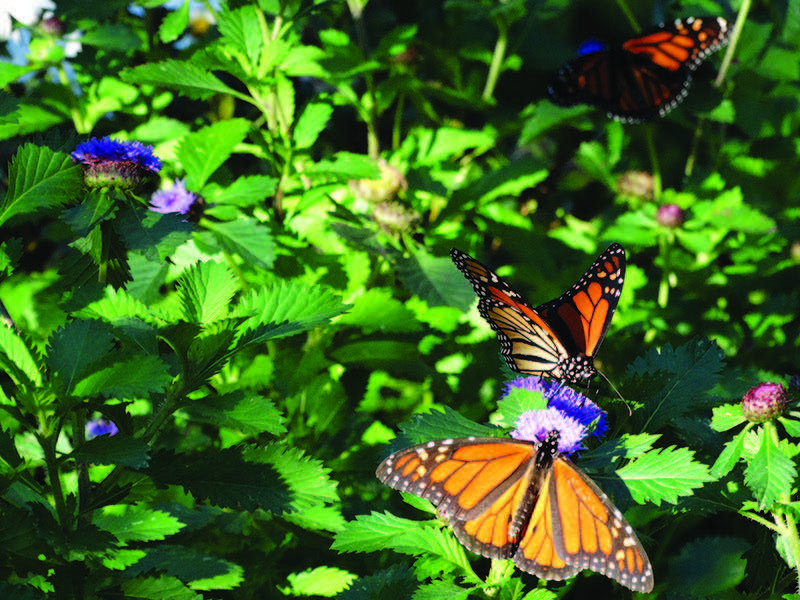Every year at Willow-Dale, I can’t wait for the arrival of the Monarch butterflies somewhere near the end of August through October even a few strays in November. Their mass fall migration is one of the greatest natural events undertaken by any organism on earth. This makes them the most wondrous and beautiful visitor to my garden. A few years ago, I was lucky enough to have them migrate and stay awhile in my garden with hundreds of Monarchs everywhere. Upon contacting Monarch Watch Tagging Program, an affiliate with the University of Kansas Biological Survey, local representatives came out to tag and track their migration.
This program was initiated in 1992 throughout North America and gives us the opportunity to follow the Monarch population. They now know their numbers have plunged over the last two decades due to habitat destruction, pollinator-killing pesticides, milkweed-killing herbicides and extreme weather conditions. But the good news is that interest in their recovery has surged to an all time high with scientist, farmers and gardeners through ‘awareness programs’ such as Monarch Watch. Farmers have started planting milkweed, the only host plant for the Monarch, in areas away from their crops and gardeners are incorporating it into their garden beds along with nectar plants.
The ‘king’ of the butterflies, hence the name Monarch has four stages in their life cycle from the egg to larva or caterpillar to chrysalis and finally the butterfly that lives 2 to 6 weeks. This life cycle is repeated throughout the spring, summer, and early fall until the fourth generation that lives 6 to 8 months begins the 2000 mile plus fall migration to Mexico and a few to Southern California. This generation after wintering in Mexico will be the ones that start the spring migration north, lay eggs and die along the way.
What about the Monarchs
for 2018? Well, unfortunately, according to National Wildlife Federation, the population is down by 14.8% that overwintered in Mexico. Alejandro Del Mazo, Mexico Commissioner for Protected Areas, said the Monarch clumps in the oyamel fir trees of Michoacan covered an area of 6.12 acres this past winter, down from 7.19 acres the previous winter. However, Journey North, that’s been tracking migrations for 25 years, noted that there was an earlier-than-normal arrival in the East that means an early beginning to the breeding season and a promise of higher-than-normal numbers for the summer. And the good news is there have been recent sightings in the Northeast that they have never seen so many Monarch butterflies on their mountain trails.
So as Summer soon turns into Autumn, enjoy the last of your garden. Listen to the subtle whisper of wind and the gentle rattling of the leaves…even the air is fresher. But the best things of all are the beautiful Monarch butterflies that will soon share it with you on their long flight to Mexico. For me, I’m looking forward to another year of having a large ‘Kaleidoscope’ of Monarchs!♦




